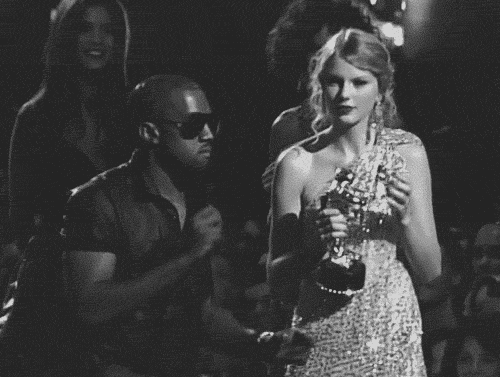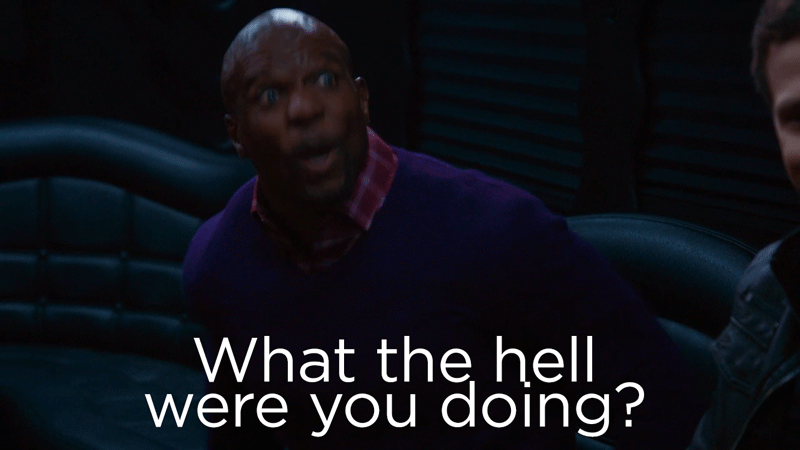Are your inMails up to scratch? Let’s face it, sometimes it’s easy to cut corners when it comes to sourcing and contacting candidates on LinkedIn. The temptation to send out a mass inMail, close your eyes, cross your fingers and hope for the best can be a lot to resist, but please, for the love of god, RESIST!
It’s all well and good conducting the perfect LinkedIn search using your beautifully-crafted Boolean strings but if the inMails that you’re sending are weak, you might as well kiss all of those potential candidates goodbye! Today, we’re listing the 10 things you should never EVER put in your inMails. Like ever.
 1: “I hope you don’t mind me contacting you”
1: “I hope you don’t mind me contacting you”
So many recruiters lead with this as a way to highlight how polite they are, but really what they are doing is putting a massive spotlight on the fact that they’re disrupting the candidate’s day and that they probably had no real business reaching out to them in the first place! Remember, at the end of the day, you’re contacting this person because you believe that you could make their life better by presenting them with an opportunity to progress in their career. Don’t start off the inMail by apologizing.
 2: “I just came across your profile”
2: “I just came across your profile”
There are two reasons why this phrase is just so wrong…
1 – It’s totally obvious that you didn’t just ‘stumble upon’ a candidate’s profile. It’s just like showing up to a spot that you know your crush is going to be at and pretending that you hadn’t a clue they were going to be there. Guess what? They know that you’ve staged the whole thing. And now they just think that you’re sad.
2 – Even if the candidate does somehow buy into the yarn that you’ve somehow magically fallen onto their profile, it’s not exactly flattering to think that you’re being contacted by someone who has put very little effort into headhunting for the role!
 3: “Could you send me on your Resume?”
3: “Could you send me on your Resume?”
Oh no, you didn’t! Think about it. You’re contacting a passive candidate on LinkedIn about a possible job opportunity. You’ve viewed their profile, which basically encompasses all of the information that appears on their resume. You’re also telling them you think they might be interested in an opportunity based on the information that you’ve seen on their profile. So why do you need them to send you a resume, exactly?
 4: “Here’s a link to the job ad, apply if you’re interested”
4: “Here’s a link to the job ad, apply if you’re interested”
Again, a big no-no. Contacting a passive candidate in the hope that they’ll be interested in the job opportunity you have on offer is one thing. Expecting them to then apply for the position and go into a black hole with all of the other applications simply isn’t realistic. It’s also the completely wrong way to go about things. What’s the point of sourcing candidates if you then throw them into a pool with all of the other applicants? Interrupting a passive candidate’s daily routine with an inMail telling them that you have this amazing job for them and then asking them to apply for it like everyone else is just plain rude, frankly.
 5: Me, Me, Me
5: Me, Me, Me
“I’m a recruiter from X”. “I specialize in X,Y, Z”. “I have a job opportunity for you”. Sure, all of these statements are true, but there’s one big problem. It’s all about you! You need to make sure that your inMails are all about the candidate. Instead of focussing on what you do, focus on the candidate’s experience and strengths. Remember, this is just like a courtship – have you ever gone on a date with someone that spends the night talking about themselves? Huge turn-off, right? So don’t be that person.
 6: “I can see from your profile that you have X years of experience”
6: “I can see from your profile that you have X years of experience”
Don’t get us wrong – templates are great. But only when used wisely. When you’re working on ten requisitions at a time, it’s easy to copy and paste your trusty template to save time and energy, but there are two potential problems with this. The first one is that when you work quickly, it’s so easy to forget to change out the Xs with the correct information for candidates, potentially leaving you in an embarrassing situation. Secondly, even if you do insert all of the correct information where it’s supposed to be, people aren’t stupid. Nine times out of ten a candidate will easily be able to tell if they’ve been sent a template by a recruiter. Our advice is to keep your templates, but only use them as a guide for the main points you want to make – not as a cut and paste tool. A good tip is to read over every inMail before you send it and ask yourself “will the person that’s going to read this know that I have spent time actually reading through their profile?”. Try to include at least one thing in your inMail that is unique about the candidate that you’re contacting – be it hobbies, awards that they’ve won, endorsements that they have, etc.
 7: Subject Line: “Career Opportunity”
7: Subject Line: “Career Opportunity”
There’s no point in crafting a highly-personalised inMail if you’re going to send it off with the subject line ‘Career Opportunity’. Again, you’re contacting passive candidates here. What if they haven’t even considered the possibility of moving jobs? What motivation would they have to open an inMail from someone they’ve never met before titled ‘Career Opportunity’? Not much, we’re guessing. Remember, the subject line could well be the most important part of your message. Have a read of Ben Slater’s post ‘The Power of the Email Subject Line’ for five tips on how to improve the quality of your subject lines now!
 8: Blah, Blah, Blah
8: Blah, Blah, Blah
With all of your personalizing and noting the similar interests that you and the candidate have in your inMail, it can be easy to get carried away at the keyboard. However, it’s always best to keep it short and sweet. The longer your inMail is, the more likely the candidate is to think that they have to draft a long response back to you, potentially turning them off the idea entirely. The recommended length for an inMail varies, but if you can try to keep it to less than 100 words if possible, you’re far more likely to get a response (50% more likely, in fact!)
 9: Vague, Vague, Vague
9: Vague, Vague, Vague
When you’re tip-toeing around the subject of jobs, it can be easy to get vague about exactly what it is that you want the candidate to do. You don’t want to ask them straight up if they are interested in the job you have on offer, nor do you want to include a long job description in your inMail, but you do want the candidate to know that you’re contacting them for a reason at the same time. Rather than keep the inMail so vague when it comes to information that the candidate doesn’t even know if they need to respond or not, take the ‘gently gently’ approach. As much as you don’t want to scare off the potential candidate, your inMail should still excite and entice them.
10: “Would you like to put yourself forward?”
Never ask a passive candidate if they’d like to put themselves forward for the position you’re recruiting for – at least certainly not in the first inMail! The question itself is far too loaded – enough to send a potential candidate running for the hills! By all means, you should end every inMail with a question, but make it one that doesn’t require too much consideration by the candidate. It’s going to be much easier for anyone to answer the question ‘Are you free this Tuesday evening at 5pm to have a chat?’ than it is to ask them to consider their future career plans without even having met you!
Get more insights on what you SHOULD be putting in your inMails with our ‘8 Simple Tips to Increase Your inMail Response Rate.’
Check out the original post on the Social Talent blog.
